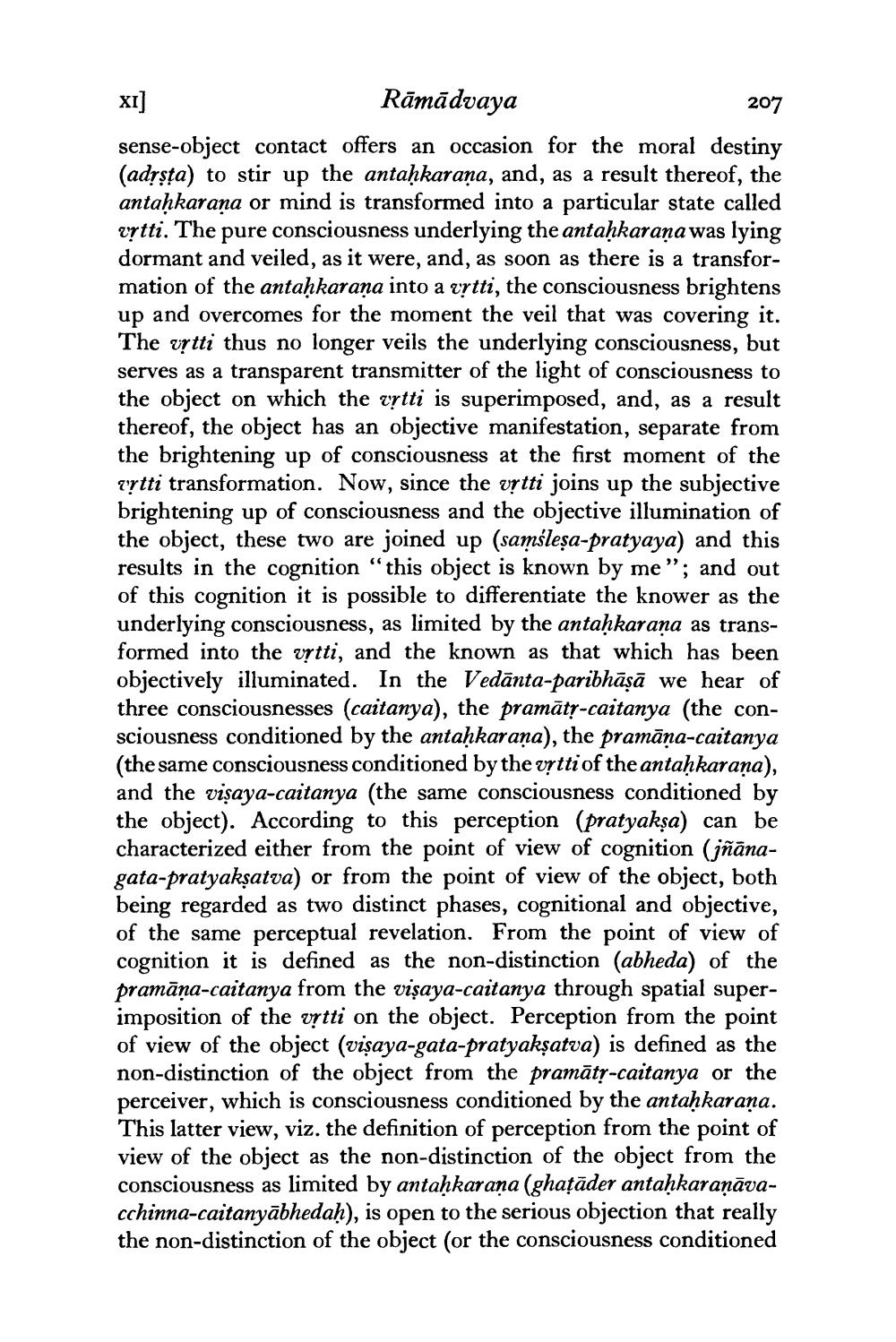________________
XI]
Rāmādvaya
207
sense-object contact offers an occasion for the moral destiny (adṛṣṭa) to stir up the antaḥkaraṇa, and, as a result thereof, the antaḥkarana or mind is transformed into a particular state called vrtti. The pure consciousness underlying the antahkaraṇa was lying dormant and veiled, as it were, and, as soon as there is a transformation of the antaḥkaraṇa into a vṛtti, the consciousness brightens up and overcomes for the moment the veil that was covering it. The vṛtti thus no longer veils the underlying consciousness, but serves as a transparent transmitter of the light of consciousness to the object on which the vṛtti is superimposed, and, as a result thereof, the object has an objective manifestation, separate from the brightening up of consciousness at the first moment of the vytti transformation. Now, since the vṛtti joins up the subjective brightening up of consciousness and the objective illumination of the object, these two are joined up (samśleṣa-pratyaya) and this results in the cognition "this object is known by me"; and out of this cognition it is possible to differentiate the knower as the underlying consciousness, as limited by the antaḥkaraṇa as transformed into the vṛtti, and the known as that which has been objectively illuminated. In the Vedanta-paribhāṣā we hear of three consciousnesses (caitanya), the pramatṛ-caitanya (the consciousness conditioned by the antaḥkarana), the pramāṇa-caitanya (the same consciousness conditioned by the vṛtti of the antaḥkaraṇa), and the viṣaya-caitanya (the same consciousness conditioned by the object). According to this perception (pratyakṣa) can be characterized either from the point of view of cognition (jñānagata-pratyakṣatva) or from the point of view of the object, both being regarded as two distinct phases, cognitional and objective, of the same perceptual revelation. From the point of view of cognition it is defined as the non-distinction (abheda) of the pramāṇa-caitanya from the viṣaya-caitanya through spatial superimposition of the vṛtti on the object. Perception from the point of view of the object (viṣaya-gata-pratyakṣatva) is defined as the non-distinction of the object from the pramātṛ-caitanya or the perceiver, which is consciousness conditioned by the antaḥkaraṇa. This latter view, viz. the definition of perception from the point of view of the object as the non-distinction of the object from the consciousness as limited by antaḥkarana (ghaṭāder antaḥkaraṇāvacchinna-caitanyābhedaḥ), is open to the serious objection that really the non-distinction of the object (or the consciousness conditioned




